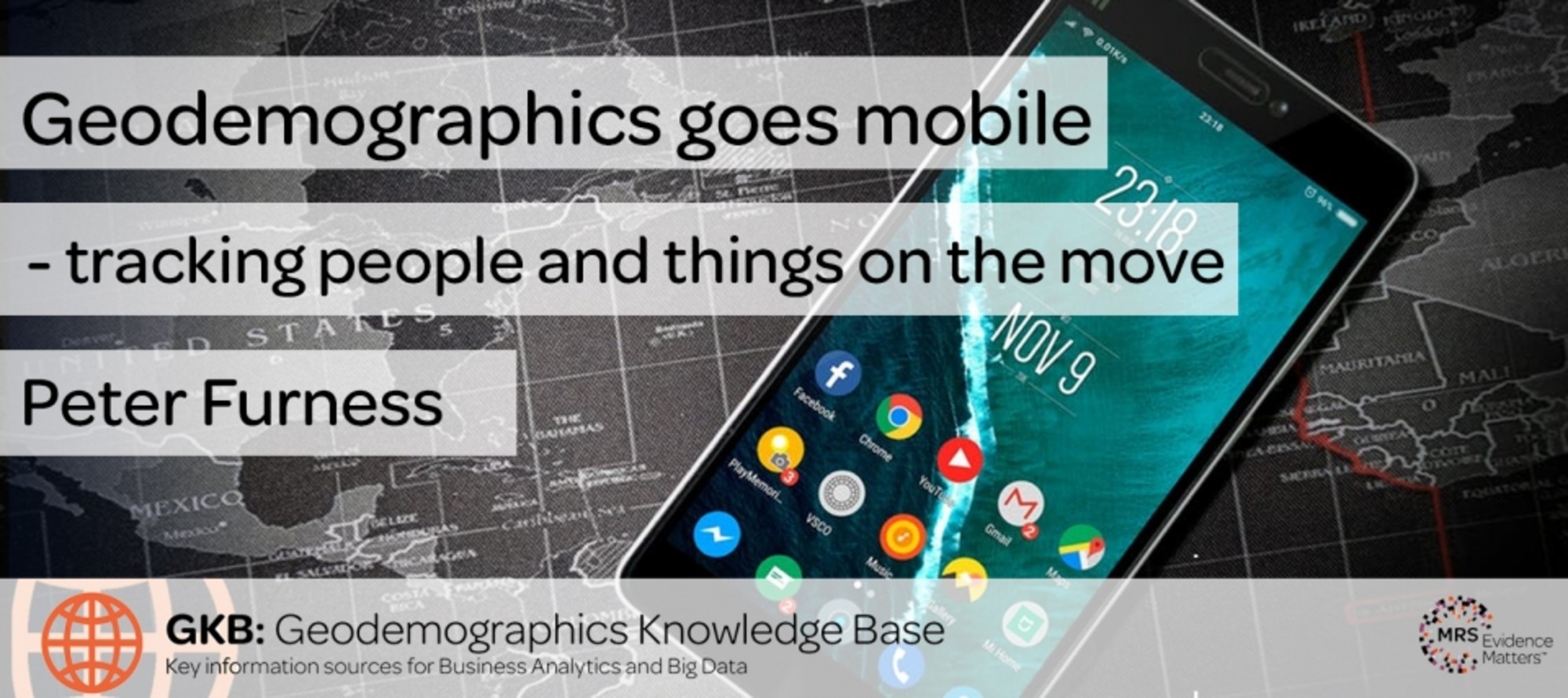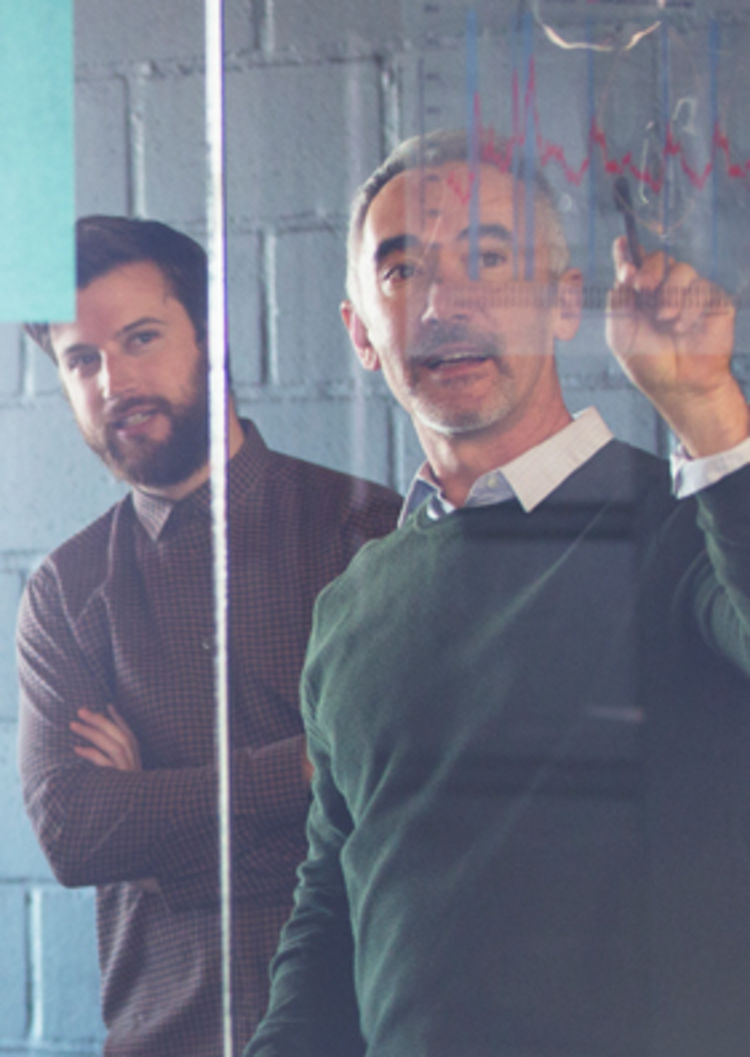Geodemographics - blogs and resources
Visit the Geodemographics Knowledge Base (GKB) for expert blogs and links to useful sources of geodemographic data and knowledge.

At a CGG seminar in 2008 we introduced ‘real time geodemographics’ for exploiting the data from tracking people and things on the move [1, 2]. At our most recent seminar we gave an update on the technologies, opportunities and risks associated with this rapidly developing area – and this keynote gives a brief summary of that presentation. To wet your appetite, the opportunities arise in a diverse range of areas which includes usage-based motor insurance, health and welfare (e.g. fitness tracking), augmented reality, and bricks-and-mortar retailing (tracking the customer journey in-store).
The status quo in 2008 was of an already well established technical infrastructure, with GPS enabled devices and video surveillance providing significant benefits in areas such as vehicle telematics, navigation, road-charging and location-based services (the reader can find full details at [2]). But this was before the smartphone had gone mainstream and tracking became truly personal (Apple launched the iPhone in 2007). Tracking now gives not only location but also speed and acceleration to the extent that tiny movements of a smartphone or wearable device can also be recorded and analysed [3].
This has given added impetus to the area of vehicle telematics by making it possible to offer usage-based motor insurance around smartphone-provided data, providing a lower-cost alternative to fixed, and expensive, in-car black-box solutions. In a 2014 keynote [4] we gave an update on the telematics area which continues to develop fast and we expect to report again on this in 2018. The convenience of using smartphones or simple plug-in ‘dongles’ is likely to have a major impact on uptake in the medium term [5].
In the health and fitness arena, wearable devices with motion sensing technology, usually linked to a smartphone, have kick-started a revolution (the Fitbit was also launched in 2007). Wearables for the ‘quantified self’ can track movement, heart and sleep patterns with the potential to link with public health systems and so enable the analysis of the impact of, for example, exercise and sleep patterns on disease and ageing. In the corporate world slogans such as ‘sitting is the new smoking’ combined with company-supplied wearables, promise to bring a new health focus to the workplace [6].
In 2008 we flagged up the area of ‘virtual worlds’ as a way of linking a virtual, web-based, representation of the real world with actual people and things using spatial referencing. This had been initiated by HP labs in 1999 with its Cooltown project to develop an infrastructure to support a web presence for people, places and things [7]. The last decade has seen rapid progress in two offshoots from this, namely the ‘internet of things (IoT)’ and ‘augmented reality (AR)’. The latter is most simply described as augmenting a view of the real world with computer generated imagery and data. Google and Apple both have current offerings in AR (see for example, [8] and [9]) along with many smaller companies such as Layar, DBpedia Mobile and Magic Leap [1].
Tracking technologies can also be used to monitor the movements of shoppers in a traditional retail environment. In 2008 we reported on two initiatives which used RFID and video surveillance methods to track supermarket trolleys (see Wharton/Sorenson and AC Neilsen’s PRISM projects at [1]). These proved unsuccessful but, more recently, two alternative approaches are gaining traction. One, which is App-based and personalised (with permission required from the consumer in exchange for rewards) is typified by Shopkick [10] which uses iBeacon/Bluetooth and audio-based tracking and has clients such as Best Buy, Macy’s, Starbucks and TJ Maxx. The other, which uses anonymous ‘Wi-Fi analytics’ to monitor smartphone Wi-Fi ‘pings’ using in-store detectors, is typified by Walkbase [11, 12] with clients such as Morrison’s, Topshop and M&S. Wi-Fi analytics is being closely monitored in the UK by the Information Commissioner (ICO) in respect of data protection regulation [13].
In a recent Guardian article, Ben Tarnoff speculates that one of the reasons for Amazon’s recent acquisition of bricks-and-mortar retailer Whole Foods is to extend the powerful analytics of its online world into the analytics of traditional retailing [14]. This will be achieved by using electronic tracking and surveillance in the physical stores to give the retailer an understanding of customer behaviour and paths to purchase to mirror what it can do online.
There is increasing public concern about location tracking and surveillance technology and, as we have seen, data protection regulators are monitoring this area closely. We predicted in 2008 that there would be some big, and nasty, surprises coming but these have largely failed to materialise. There is no room for complacency, however. Recent research by a team at Newcastle University [15] has revealed the ease with which malicious websites, as well as installed apps, can spy on us using just the information from the motion sensors in our smartphones. Using sophisticated machine learning algorithms, hackers would be able to decipher PINs and passwords just from the way we tilt and handle our phones when we type the information in. The team are now extending their research to the data obtained from wearable fitness trackers.
Looking ahead we expect further rapid evolution in all the areas described. In 2008 we expected to see the emergence of new players specialising in analytics for the real time, mobile, world but this is happening very gradually. Even in the most mature segment, the application of telematics data to motor insurance underwriting, companies are struggling - in a survey by Ptolemus Consulting of sixty insurers globally – when asked about the most challenging part of offering usage-based insurance the most common issue was the lack of understanding about how to extract value from the driving data [16]. They also cited the shortage of data scientists – but that is another story!
@geometerman
Peter is a mathematician whose work in geodemographics spans several decades. He is passionate about the exciting new data and analytical opportunities opening up in the mobile world. Peter has been a member of the CGG since 1993 and was instrumental in setting up the Geodemographics Knowledge Base in 2000.
Any views or opinions presented are solely those of the author and do not necessarily represent those of the MRS Census and Geodemographic Group unless otherwise specifically stated.


Visit the Geodemographics Knowledge Base (GKB) for expert blogs and links to useful sources of geodemographic data and knowledge.


Our newsletters cover the latest MRS events, policy updates and research news.
0 comments